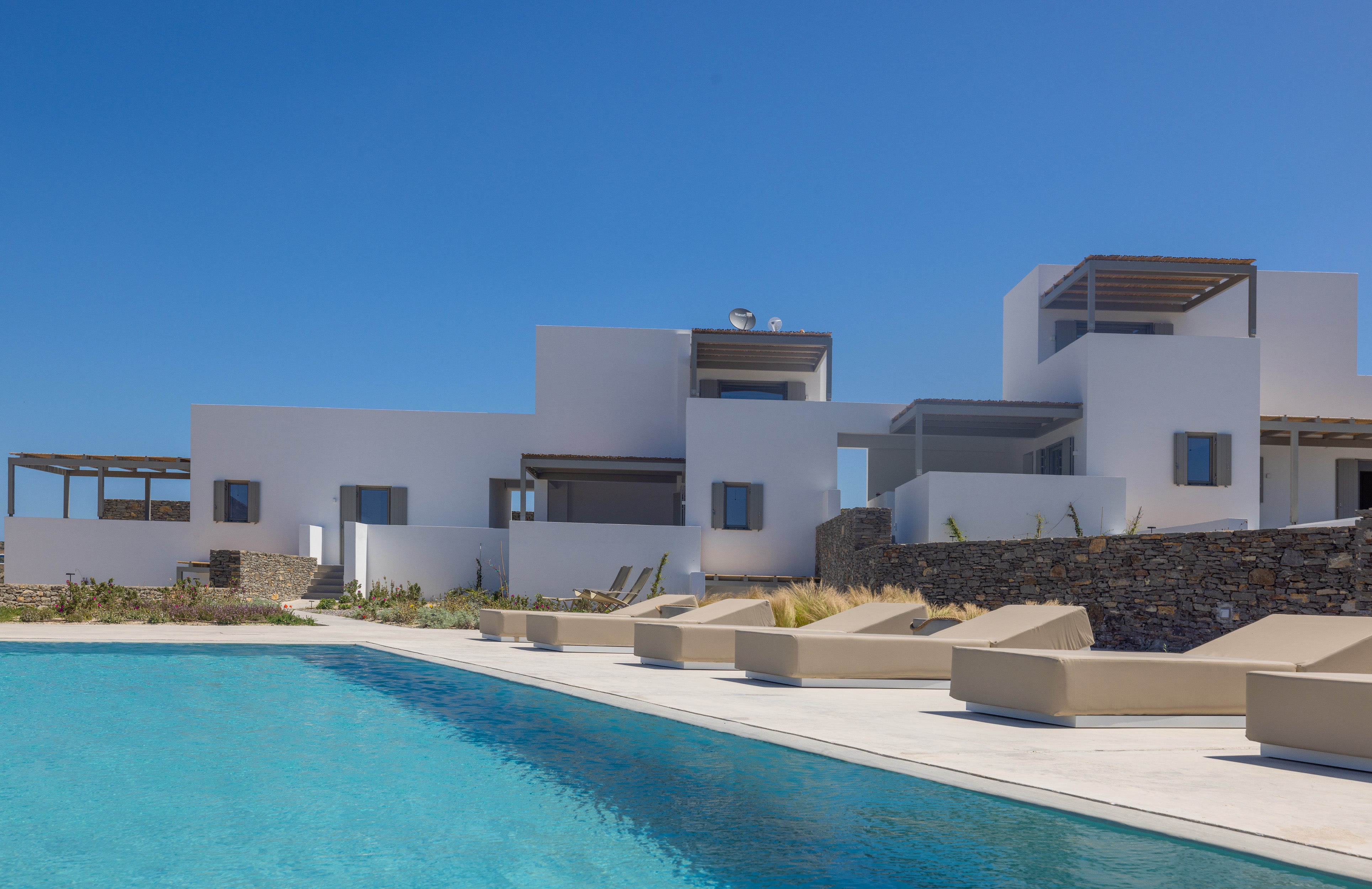Why wild, beautiful Milos should be your next Greek island stop
Seen Santorini? Meh about Mykonos? Then this more rugged, less developed Cycladic island is bang on trend for your next adventure, says Lucy Thackray


Your support helps us to tell the story
From reproductive rights to climate change to Big Tech, The Independent is on the ground when the story is developing. Whether it's investigating the financials of Elon Musk's pro-Trump PAC or producing our latest documentary, 'The A Word', which shines a light on the American women fighting for reproductive rights, we know how important it is to parse out the facts from the messaging.
At such a critical moment in US history, we need reporters on the ground. Your donation allows us to keep sending journalists to speak to both sides of the story.
The Independent is trusted by Americans across the entire political spectrum. And unlike many other quality news outlets, we choose not to lock Americans out of our reporting and analysis with paywalls. We believe quality journalism should be available to everyone, paid for by those who can afford it.
Your support makes all the difference.I was determined to get there before the influencers. Stepping off the first bus of the day at Sarakiniko Beach, the dusty trail down to the water seemed quiet at first. But as the walls of swirling white rock parted like waves, I suddenly saw them: hundreds of smartphone-wielding hotties wallowing in bright turquoise pools. And then I heard it: the faint but unmistakable, sinister hum of a drone.
Sarakiniko, one of the top sights on the island of Milos, suffers from being beautiful in an otherworldly, surface-of-the-moon sort of way. Although there are no hotels, restaurants or even trees for shade here, young people come by the dozen to get that sought-after shot. Despite the competition, it was undeniably staggering: huge meringue peaks of white rock rippling up from shallow waters, towering cliffs pocked by enormous, yawning caves. The tourists on its vast lunar landscape seemed like ants.
Milos is having a moment. An island in the Cyclades archipelago, 95km northwest of Santorini, it was traditionally a centre of mining – of obsidian, by Neolithic settlers who used it to make tools and weapons, then later of minerals like manganese and baryte in the 19th and 20th century. Now, by the looks of Sarakiniko, the only thing being mined here is #content. Move over, Mykonos: the style set has found Milos.

Luckily, it’s still soulful and charming, with enough sandy beaches and remote, succulent-sprouting interior to spread out in. In fact, the hotel scene here remains surprisingly low-key: charming little whitewashed houses with wooden shutters, for the most part; or small, no-frills guesthouses speckled around the port. The super-luxury digs here can be counted on one hand, meaning few or no A-listers choppering in from Athens (though you will see some super-yachts). Yet there’s a gentle liveliness to its port, Adamantas, and northern coast town, Pollonia, and more things to do than on smaller Cyclades islands nearby.
Read more on Greece travel:
I step off the ferry in Adamantas, a movie-set whitewashed Cycladic port, in peak summer. Strolling through its small grid of streets, it’s approachable and casually glamorous: small boutiques such as Vanilla and Votsalo sell last-minute sunhats, kaftans and summer dresses; grinning kids delve into huge ice-cream sundaes at pastel-coloured Aggeliki.
I’m told by my hosts at new hotel Korfi de Milo that the best way to see Milos is by boat. “You will get a feel for the whole of the island from the water – then you can choose where you want to see up close,” says Dimitris, one of the three brothers who built the hotel, expanding their parents’ traditional Milos home.

Skimming across impossibly smooth Aegean waters as vivid afternoon melts into golden hour, and then to sunset, is heaven. I pick my tour arbitrarily from dozens offered in Adamantas’ many travel-operator kiosks – tickets range from £40-200pp, so shop around. Boarding a catamaran from wild, ochre-yellow Agia Kyriaki beach, we’re whisked along Milos’s wild south coast, passing rocky outcrops, spectacular caves and slim bays reachable only by water. Dropping anchor at Kleftiko, we’re enveloped in a swathe of white cliffs and caves with a similar liquid look to Sarakiniko. Diving into swimming-pool shallows in a robin’s egg blue, swimmers of all ages revert to a childlike state, clambering up into the lips of caves and ducking down into handstands.
A golden-hour swim is passed in rust-coloured Kalogries bay, where ours is the only boat in sight. We loiter off Klima, Milos’s famous fisherman’s village, to watch the sun sink beneath the horizon. As two charming young sailors, George and Dimitri, top up plastic cups of cheap, sweet white wine, I lay back and watch the wild, unspoiled coastline whizz by.
The following evening, I take another tip from the brothers Lillis and head to Mandrakia. My goal is a meal at traditional seafood taverna Medusa, but I first want to snoop around this tiny, photogenic fishing village. I snap photos of the island’s signature syrma boat garages, painted in Starburst shades of pink, orange and green. Between two boxy, whitewashed houses, I spy an octet of octopuses dangling from a drying line; below, painted wooden fishing boats look readied for morning.
Skimming across impossibly smooth Aegean waters as vivid afternoon melts into golden hour, and then to sunset, is heaven
As the afternoon cools into evening, I take an impromptu dip off the wonky concrete jetty (note: don’t go anywhere in Milos without your swimwear). Bobbing in the cool, clear shallows, I see a couple snorkelling off towards the rocks nearby. Two elderly men sit on deckchairs, sharing a cigarette. It’s a moment of stillness and authenticity you’d struggle to find on scene-y Santorini.
At Medusa, I get to taste what I’ve been smelling: the briny, fresh-from-the-waves haul from those boats. Zingy anchovies marinated in peppery olive oil, parsley and fresh garlic; vinegar-sprinkled slivers of fresh octopus; a meaty tuna steak, accompanied by a simple flame-grilled red pepper. Large tables of chattering groups dominate here, but my mellow table for one has a soothing sea view. I’m even visited by a hopeful-looking ginger kitten.
Travelling car-free on an island built for hire cars is challenging, but possible. I work around Milos’s basic bus timetables; from Adamantas, you can get to Sarakiniko and Pollonia – a charming dinner spot, with a crescent of lively waterfront tavernas and even a sushi restaurant – to hilltop island capital Plaka (one its most photogenic spots) and quaint Trypiti with its Roman amphitheatre. Each ride costs €2 (about £1.70), which feels especially good value after I accidentally miss a bus and end up spending €30 on a taxi, and most routes last between 15 and 30 minutes.

On my last day, I take the bus to Paliochori. There are more wow-factor beaches, I’m told – the nearby Tsigrado is the Instagram star, reached by climbing down a precarious-looking ladder. But Paliochori is the locals’ choice: broad and toffee-sanded, backed on each side by craggy cliffs striped with gold and rust-red. The water sparkles with clarity, and a series of increasingly swanky beach clubs tout cushioned daybeds and Aperol spritzes. I opt for the least expensive one, Pelagos, mentally splashing the money I’ve saved with all my bargain bus rides. In a still, roasting hot Greek summer, this seems to be where the breeze has been hiding.
Like the wider island, Paliochori is a curious mix of grit and glamour – unspoiled scenery wraps smart beach clubs, frisky waves bother the prim daybeds, and toddlers fling handfuls of sea pebbles across smooth sands. The A-list may not be on their way to Paliochori, but that feels like even more of a reason to hide out there. I wade back into the shallows. Maybe I can afford to miss one more bus.

Travel essentials
Getting there
Milos is a three-hour ferry from Athens (timings vary depending on operator) or a two-to-three hour ferry from Santorini or Mykonos. Buses leave from Adamantas and timetables can be found here.
Staying there
Korfi de Milo
Brothers Chronis, Dimitris and Konstatinos Lillis have built a haven in the arid, grassy landscape just outside Adamantas. A short drive from the port, their self-catering rooms and suites all have generous terraces or balconies, daily breakfasts of pastries, cakes, fresh fruit and salads, and use of a stylish communal pool; they also know the island inside out. The best choice if you have a hire car.
For just a night or two’s cheap and cheerful board in the main port, Hotel Eleni is easily reachable from the ferry and has simple, traditional-feeling rooms for under £50 in low season. There’s no breakfast included, but bakeries and brunch spots are within walking distance.
Read more of our best Greek hotel reviews
Join our commenting forum
Join thought-provoking conversations, follow other Independent readers and see their replies
Comments